Andalusia is the Spain of legend: a land filled with Medieval hilltop towns, flamenco dance, ancient Moorish heritage, and stunning landscapes that once stood in for the Wild West in many a spaghetti western.
I first arrived in Andalusia after a month-long backpacking trip through Morocco. Weary from weeks of dealing with pushy market salesmen and a more conservative culture, stepping off the ferry in Spain felt like I’d arrived in a different world.
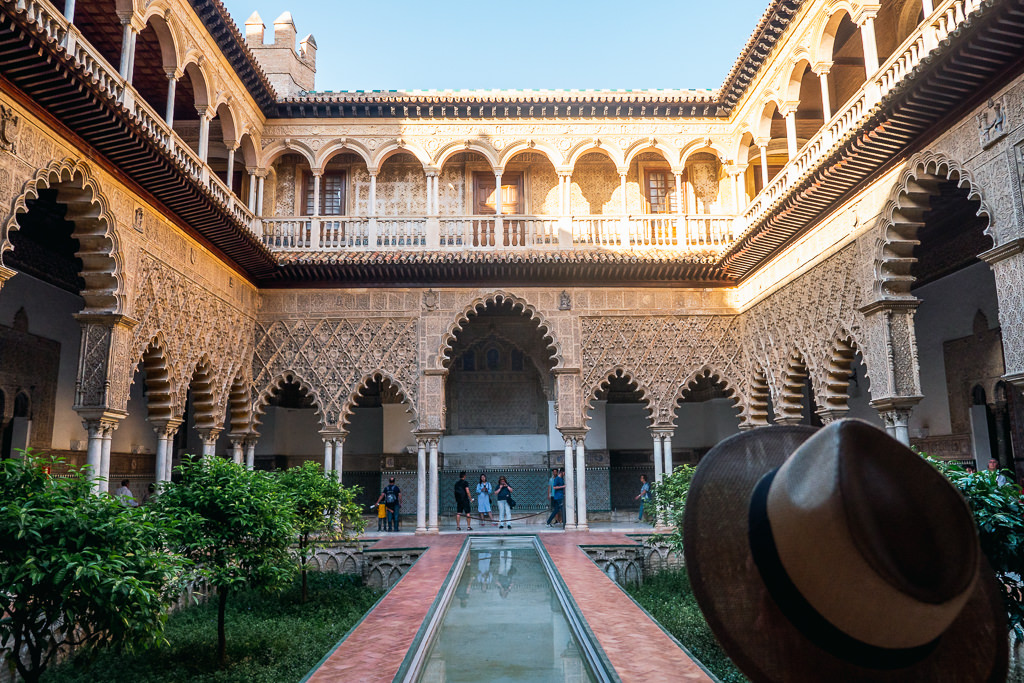
Feeling exhausted, I plunked down in a little tapas bar near the docks. The barmaid — long brown hair, frilly skirt, dark red lipstick — twisted one of her palms above her head in a flamenco-like fashion, whirled around to face me, gave me a big smile, and asked what I’d like to order.
I was smitten.
With this bartender? Definitely, she was charming.
Though it was from this moment that I was utterly in love with Andalusia itself — its passionate culture, food, and beautiful lands.
Since that first introduction to Andalusia in 2015, I’ve come back many times, discovering more with each trip. I will share some of the must-see highlights, as well as some unique travel ideas for your Andalusia itinerary.
Plan your Andalusia trip
1. Setting off in Seville
The capital and cultural hub of Andalusia
While it may be challenging to choose what to include in your Andalusia itinerary, knowing where to start is very easy. There is no better place to begin your trip than in Andalusia’s brilliant capital, Seville.
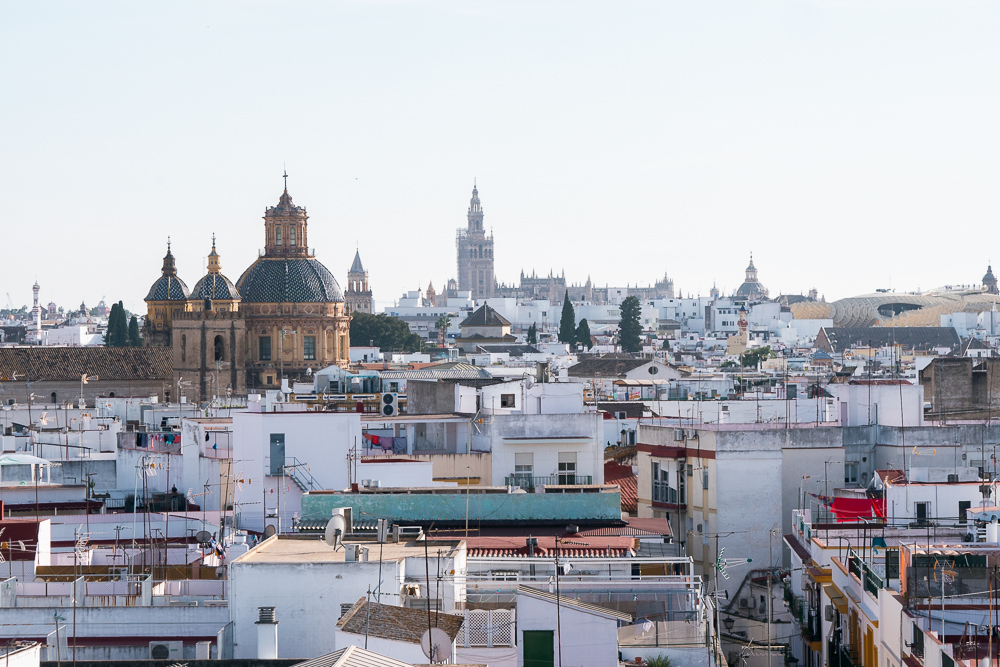
Seville, brimming with history, was once the economic centre of the Spanish Empire. Like all of Andalusia, it also once belonged to the territory of the Moors, the Muslim inhabitants of northwest Africa.
You can easily see this history reflected in Seville’s stunning cathedral, whose bell tower was once a minaret, as well as the intricate Arabic building styles used to construct the impressive royal Alcazar palace.
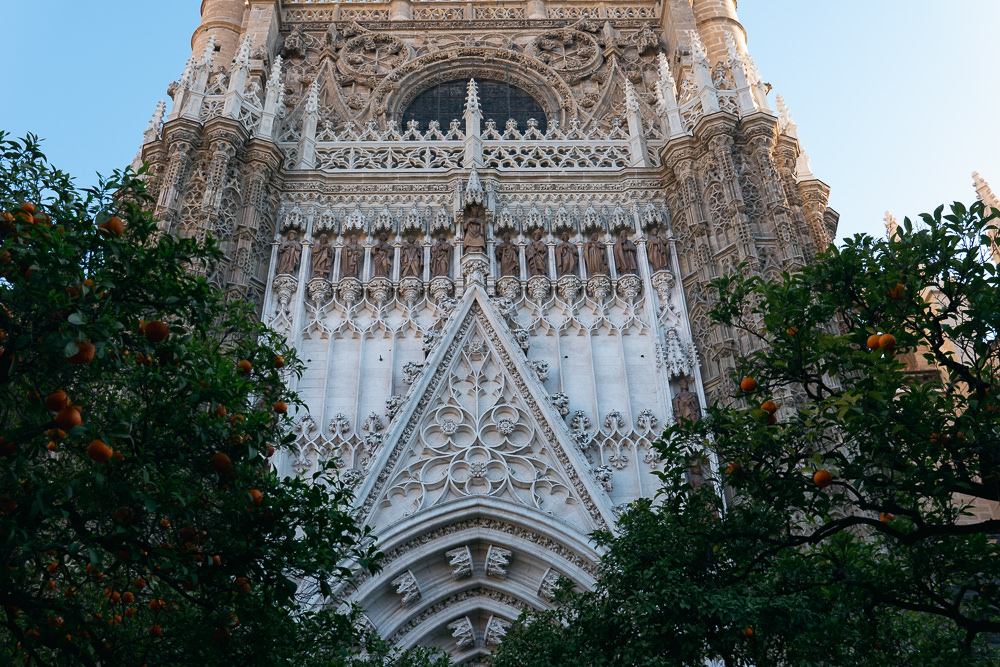
Seville is a lively and delightful city filled with sunny plazas, flowery parks, and cosy courtyards. Although its historic neighbourhoods are sure to captivate you first, the more modern features are also impressive.
Take for instance the undulating wooden structure above the La Encarnación square, locally known as Las Setas (the mushrooms) as its six parasols resemble six mushroom caps. You can take a lift to the top and enjoy cocktails with a view of Seville’s layered roofscape and its unique gothic cathedral.
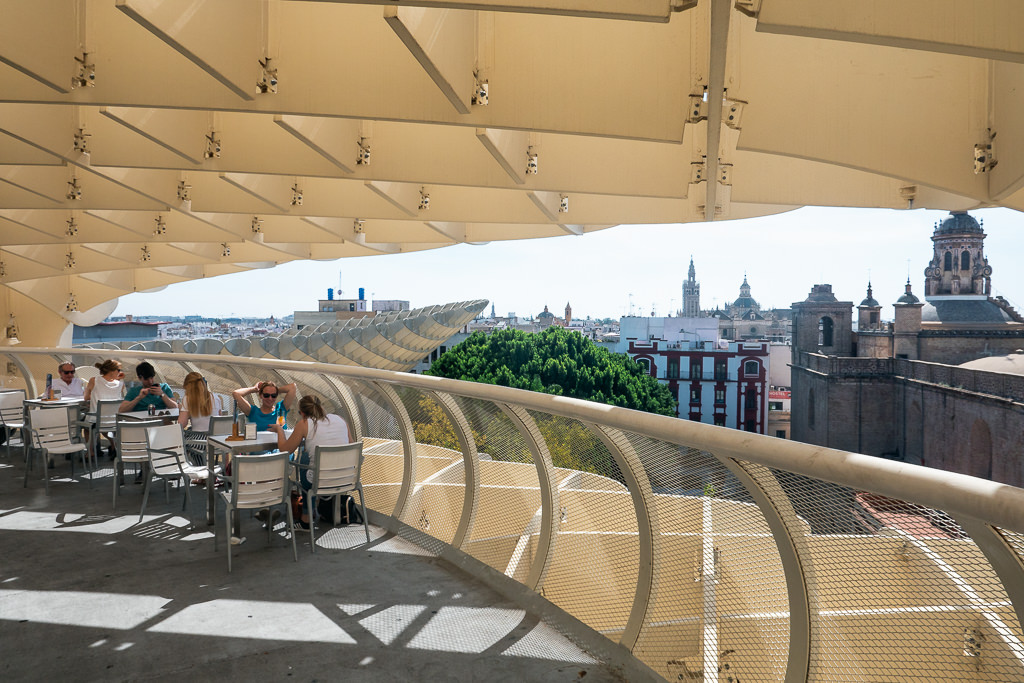
Seville is famed for its orange trees lining the streets and plazas. If this city was itself an orange, know that there is a lot of juice to it. With many interesting attractions, colourful neighbourhoods, and insightful museums to choose from, you won’t have to squeeze very hard to fill up your time!
If you can, I recommend staying at least three days in Seville, especially if you wish to juice it for all it’s worth.
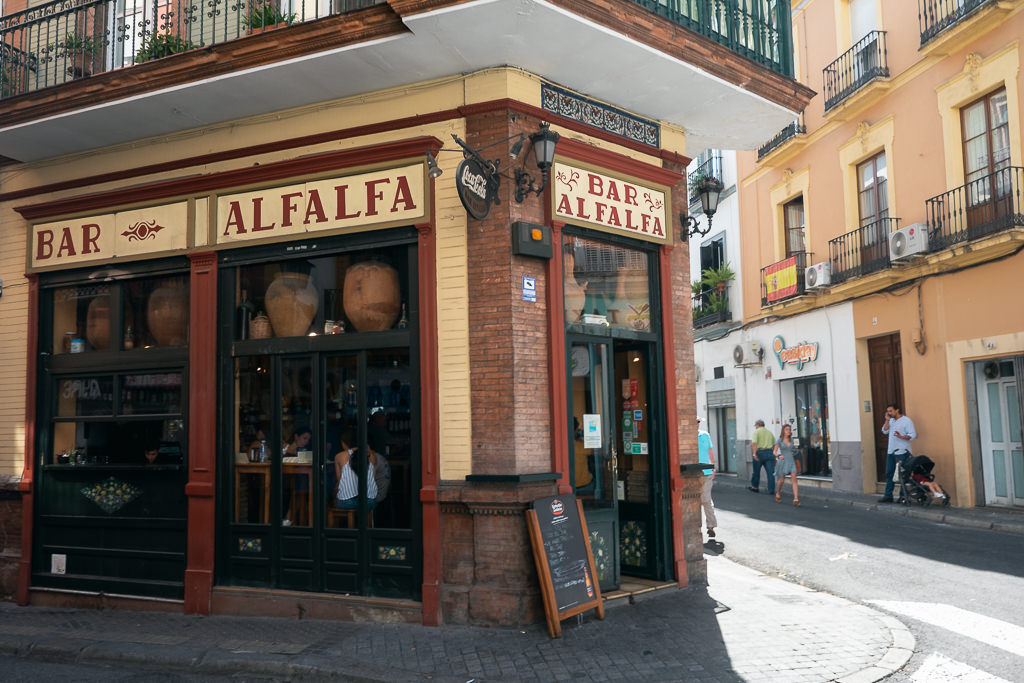

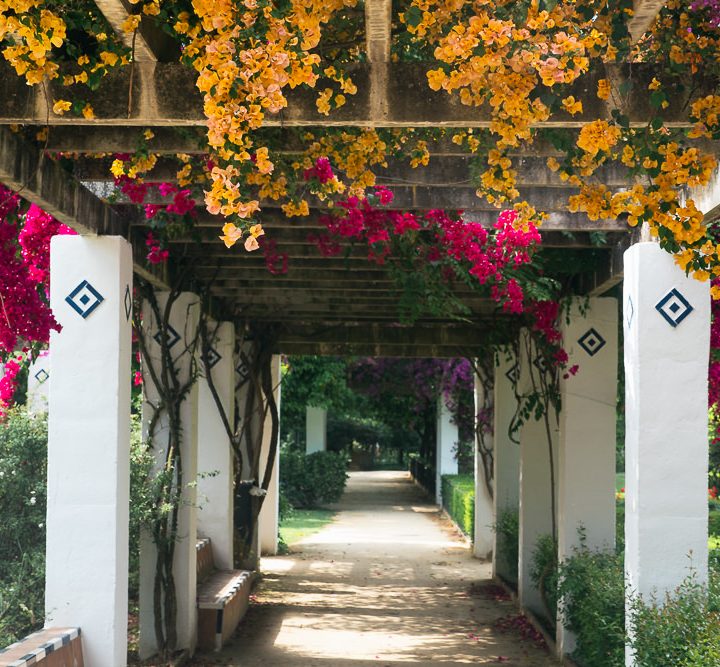
If you want to experience the magic of authentic Spanish flamenco, Seville is a great place to do it. A guided walking tour of the historical centre is also highly recommended, as it will give you some crucial context to understanding this city’s significant history.
For more, check out these 27 seriously sensational things to do in Seville.
2. Wild Jimena
Visit the white villages in Andulusia’s countryside
From the city to the countryside: our next stop on this journey is Jimena de la Frontera, a historic town in the heart of Andalusia.
It’s one of many charming ‘Pueblos Blancos’ (white villages) found within the rural and mountainous areas between Seville and Granada.
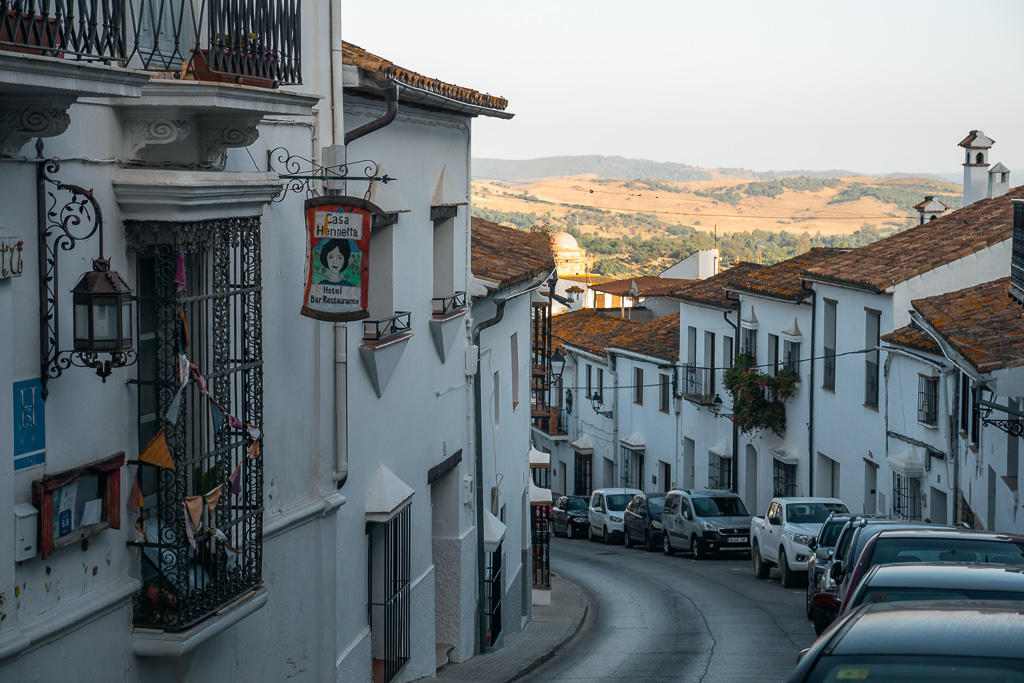
Jimena’s white-washed buildings and narrow but steep cobbled streets are typical of southern Spain. Poking up above the rooftops are the remnants of a Moorish and Roman castle, which is free to visit.
This cheerful town’s claim to fame is a cave where prehistoric cave paintings were found; one ancient drawing of a rowboat was adopted as the town symbol and is depicted in some of the signs and weather vanes atop the chimneys.
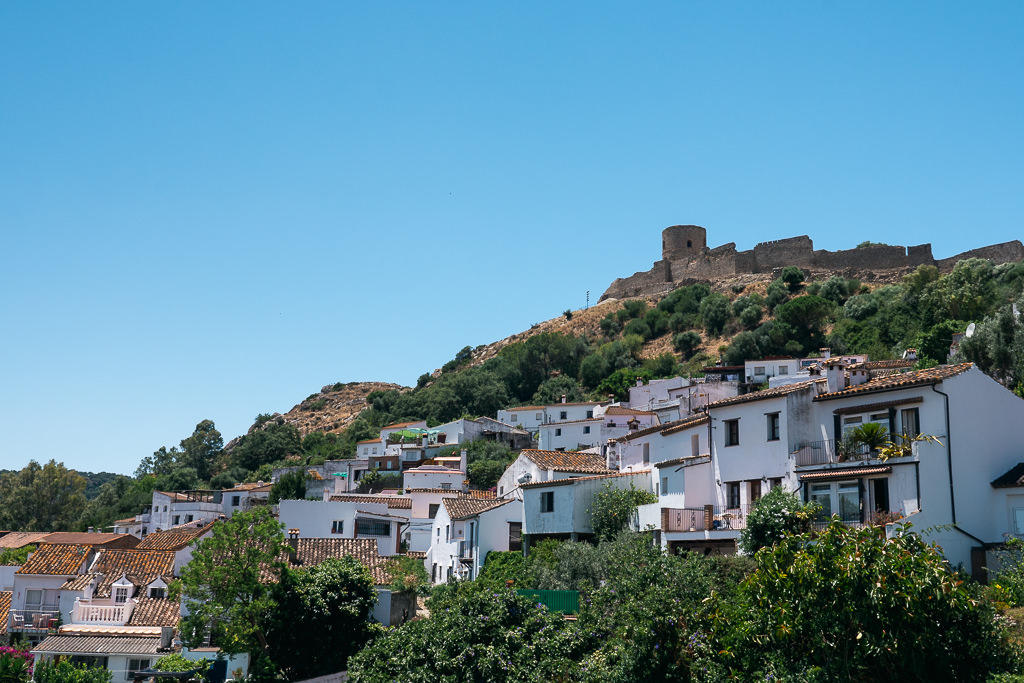
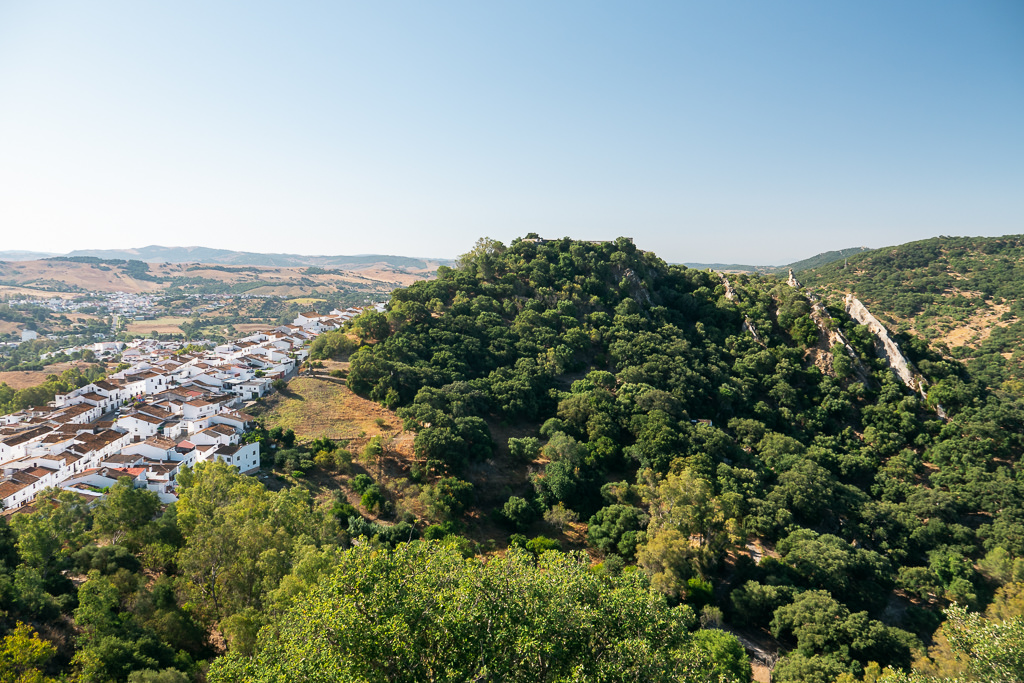
Located at the edge of the Los Alcornocales Natural Park, Jimena invites you to explore its natural surroundings. The village is backed by a steep mountain ridge with a walking path cutting through it, emerging on the other side to reveal the Hozgarganta River.
Visiting in early July, there were butterflies fluttering all around and the water was perfect for a swim. While hiking along the riverbank, I met several droves of semi-wild black pigs and was lucky to spot condors flying overhead.
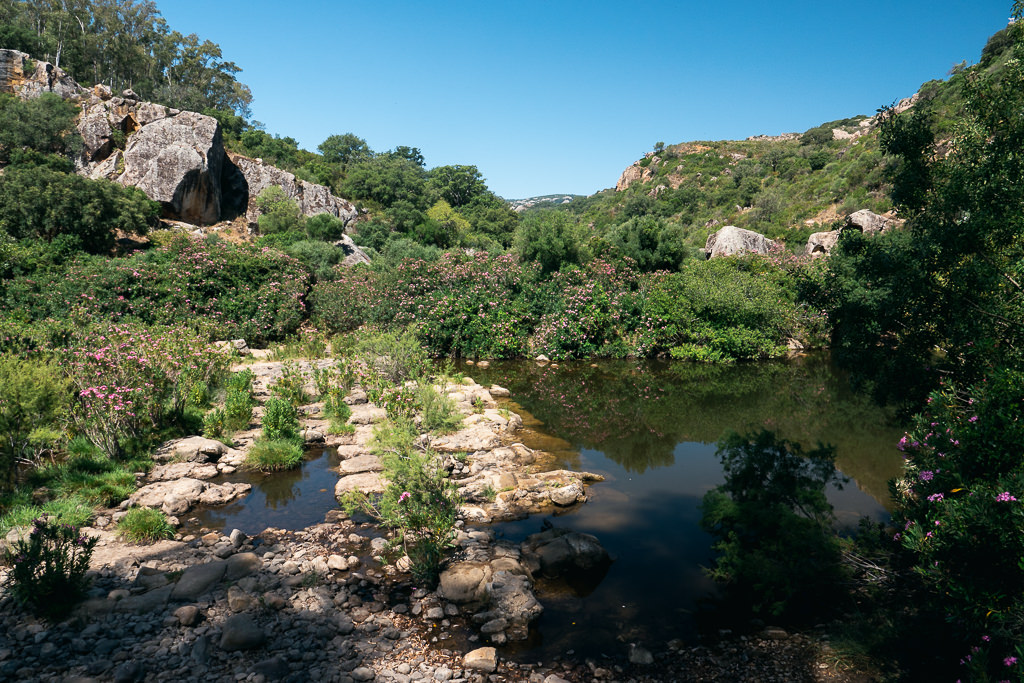
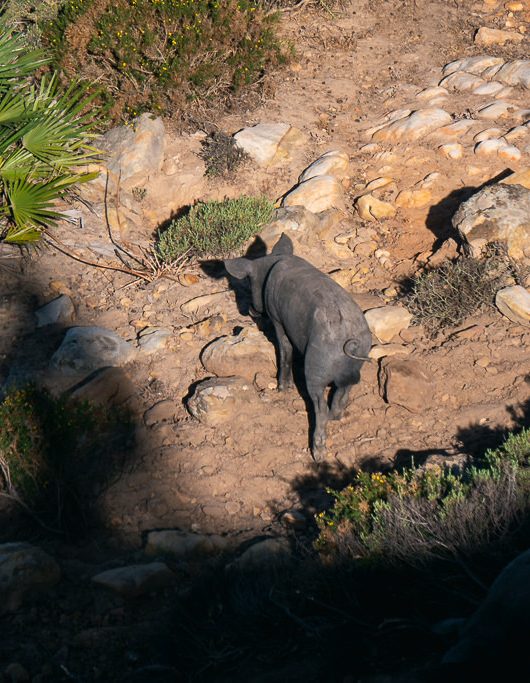
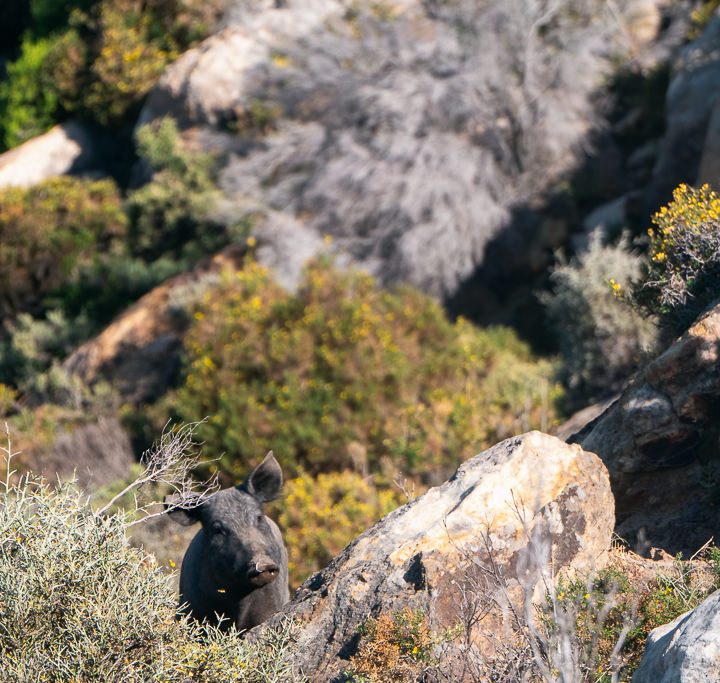
When eating at any of the cafes or restaurants in town, be sure to order anything containing wild mushrooms (setas salvajes). These are foraged by hand in the cork forests of the national park and are a not-to-be-missed local speciality.
The most commonly recommended itineraries for Andalusia seem to steer travelers towards the larger cities like Seville and Granada, thereby missing out entirely on the rural charms of this beautiful region. If your time allows, I definitely recommend that you visit some of the smaller towns!
Jimena de la Frontera is just one of many villages you could choose to visit. My other favorites include Setenil de las Bodegas, Grazalema, and Arcos de la Frontera. For more information on these destinations, don’t miss my guide to the Prettiest White Villages of Andalucía.
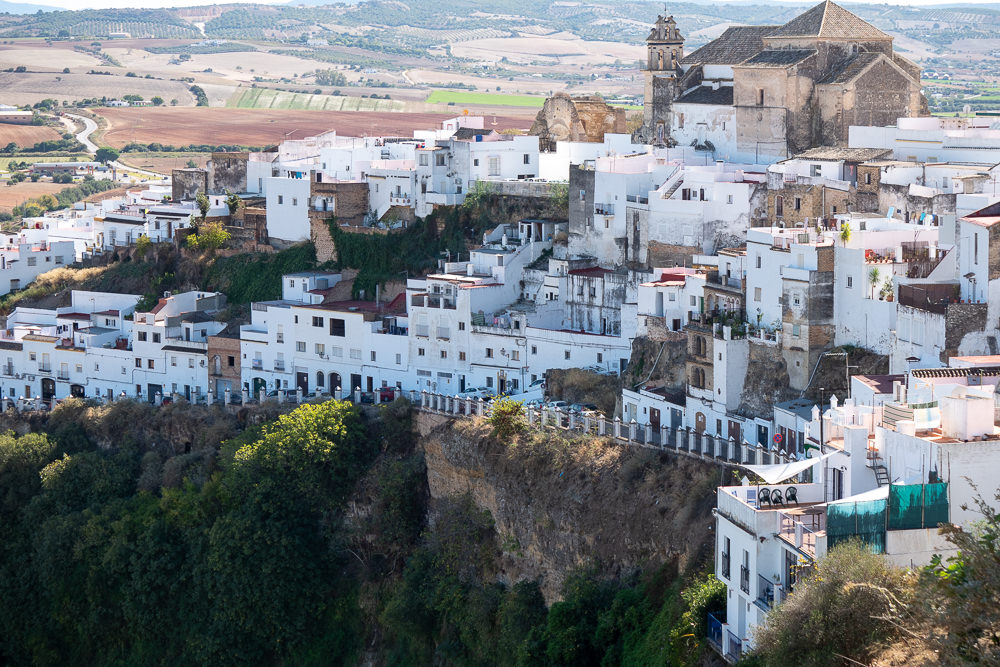
3. Paratriking in Ronda
Soar like a condor over this town’s epic stone bridge
The Medieval town of Ronda is another Andalusian highlight, owing to its epic stone bridge connecting the two halves of the town across a deep canyon.
In summer, Ronda does tend to fill up with day-trippers from the Spanish coast, but it’s worth giving Ronda a closer look than is typically afforded by the tour bus crowd. In fact, Ronda makes for a wonderful overnight stay.
At a minimum, be sure to hike down from the bridge; from a lower perspective, it is even more impressive. Better yet, why not take the chance to see this epic bridge from the skies high above?
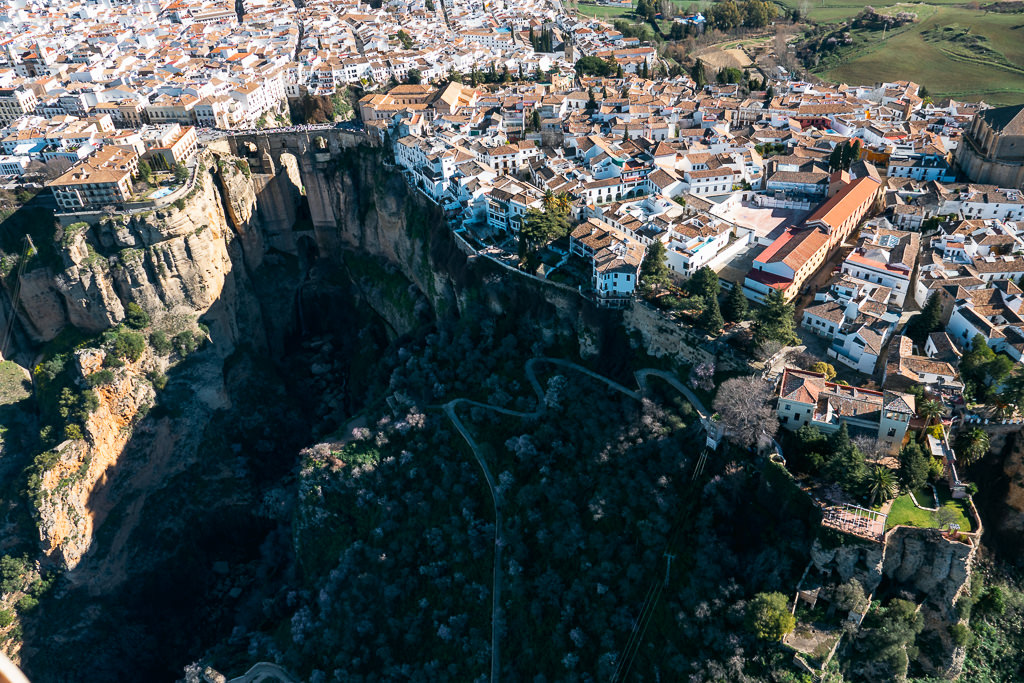
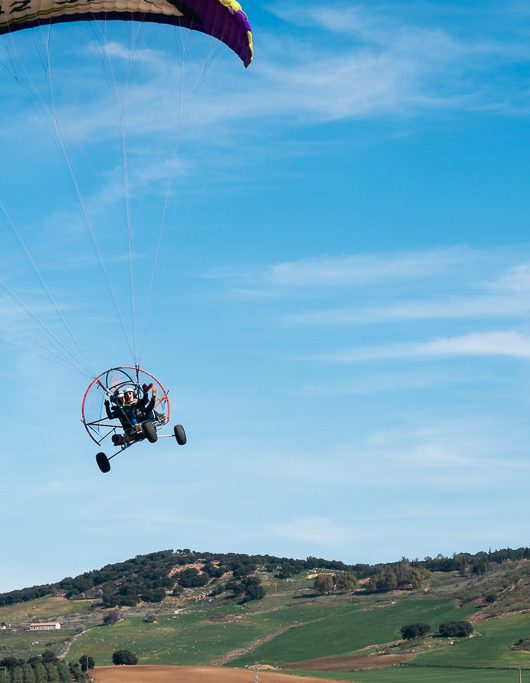
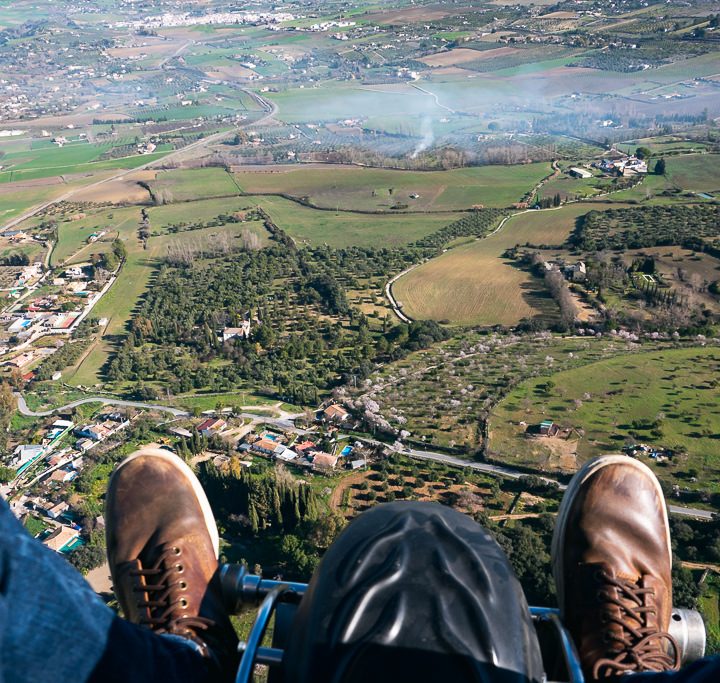
A tandem paratrike flight will give you a thrilling drone’s eye view of the town, the bridge and the gorgeous landscapes around it. These seated motorised paragliding tours take either 15 or 30 minutes, depending on your preference, and the cost includes videos and photos. It’s a sensational experience, and you may even be lucky enough to have a curious vulture join you, as happened during my flight!
Once back on terra firma, you may want to calm yourself down from all the excitement with a gentle walk around Ronda’s medieval walls. Don’t miss the Water Mine, an intriguing structure dating back to the Moorish rule. It is a sequence of stone stairways carved into the rocks that will take you from Ronda’s plateau all the way down to the river canyon, a secret route once used to collect drinking water during sieges.
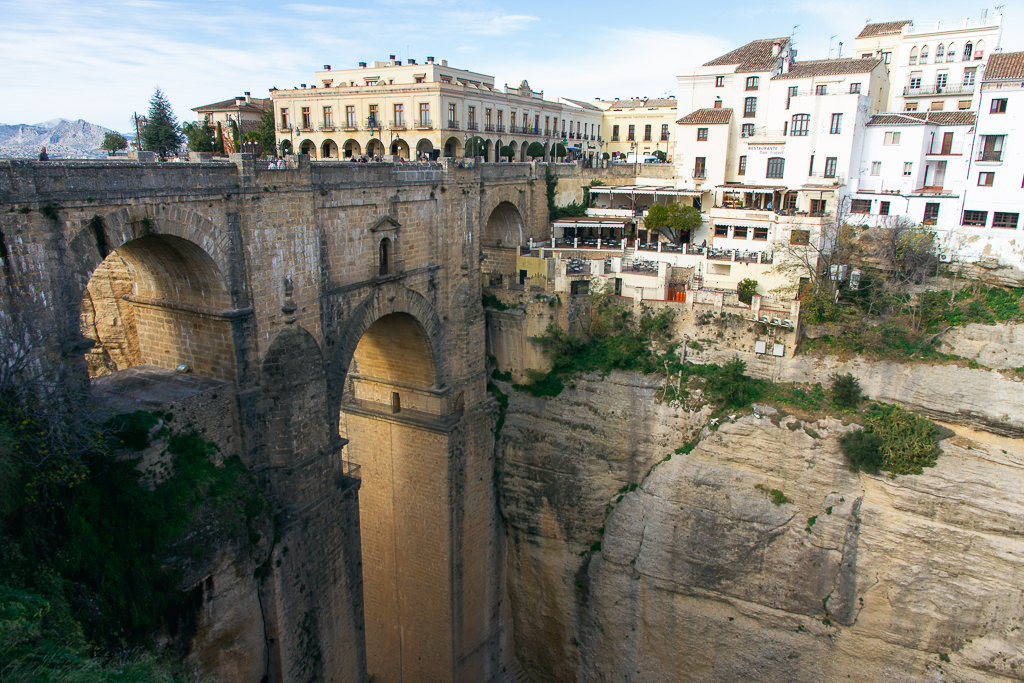
Although Ronda attracts most visitors for a brief visit and a picture on the bridge, I think there is enough to justify spending a full day, or overnight if possible.
For more details, including my recommended walking route around the town, check out my in-depth guide to Ronda.
4. Spain’s most epic mountain path
A hair-raising hike through the Gaitanes Gorge
If flying over Ronda didn’t have your blood pumping, perhaps hiking the Caminito del Rey (the King’s little path) will.
This precarious and vertigo-inducing trail through the mighty Gaitanes Gorge was built in 1905 for maintenance crews to access a hydroelectric dam. The Caminito del Rey was built using metal rails and beams high up along the edges and cliff-faces of the gorge. The path fell into disrepair for decades, luring adventurers and mountaineers and earning the distinction of the “world’s most dangerous walkway”.
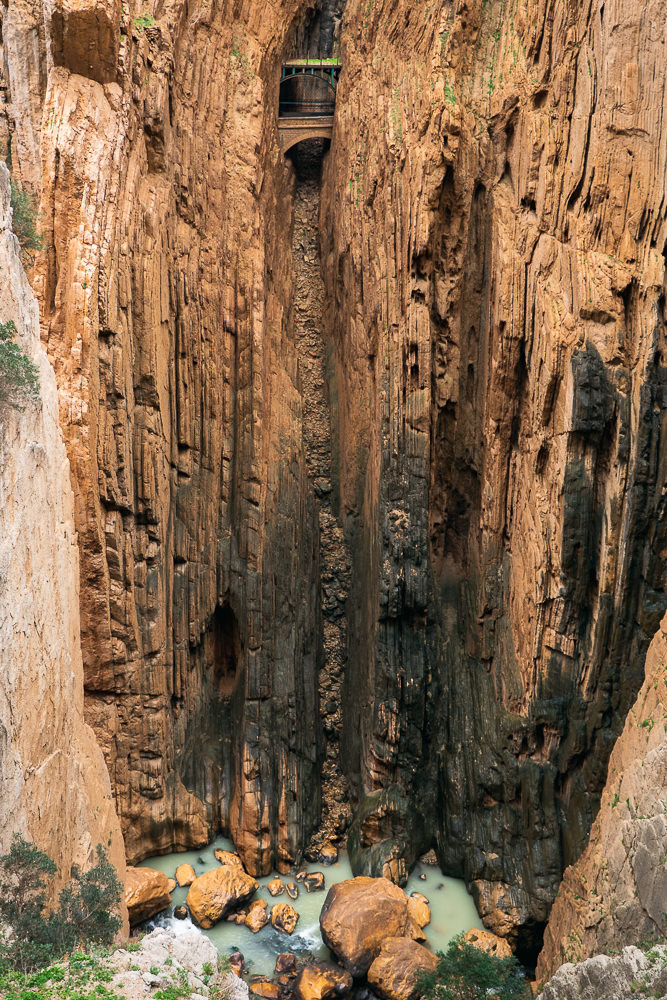
In 2014 it was resurrected by constructing a new walkway above the crumbling old one, making the Caminito del Rey accessible to the public (including adults or children over 8). Traversing the Caminito involves a 3km (2 mile) hike through a forest to the entrance, followed by an equal length boardwalk trail through the gorge. A bus will bring you back to the starting point.
You can expect to see a dizzyingly deep gorge, incredible rock shapes created by millennia of erosion, and of course, the remnants of the old paths and tunnels. With some imagination, you can think of yourself making some kind of perilous trek through a Wild West setting, though the modern path is perfectly safe.
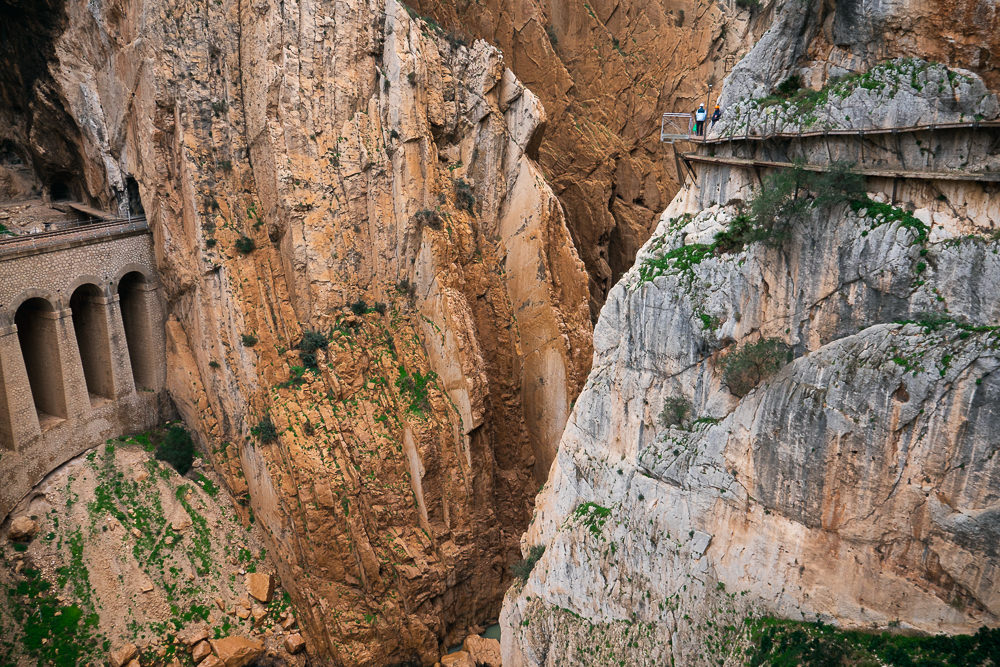
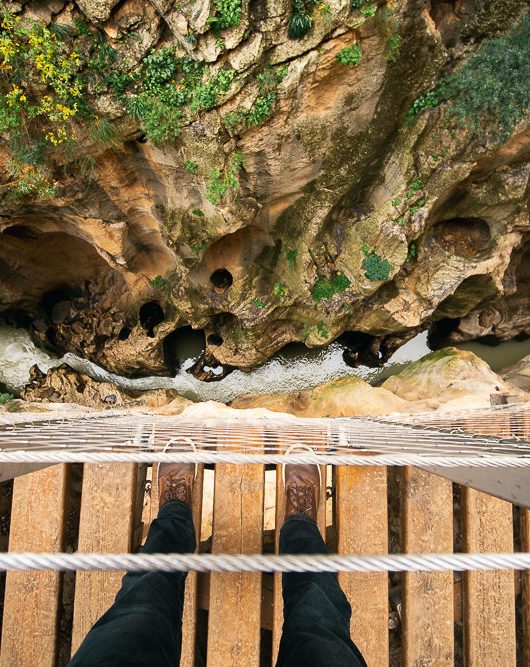
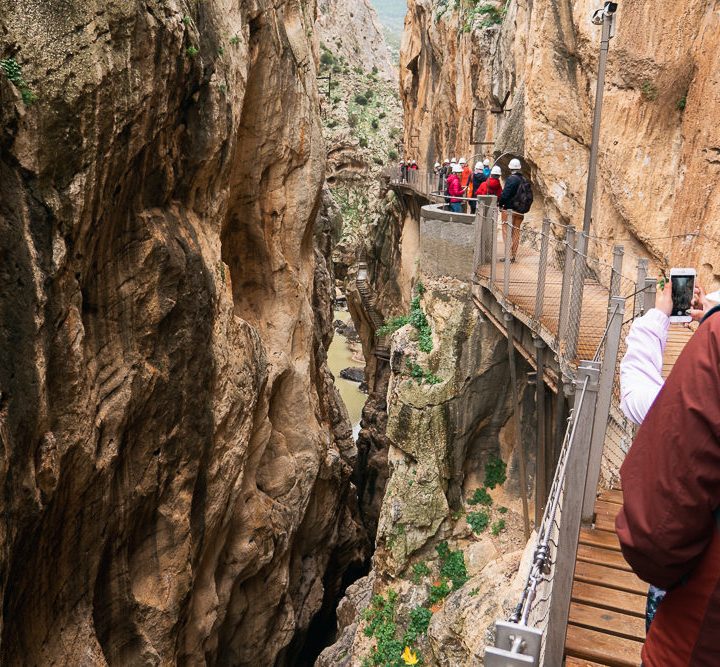
The Caminito meets the single-track railway line from Malaga to Seville at several points, which is still in use. This line runs through a series of mountain tunnels built in the 19th century, which helped free the coastal city of Malaga from its relative isolation. The Caminito is best reached by car, but if you’re not on a road trip, taking this train journey will give you a quick glimpse of the gorge and mountain range from the carriage windows.
Tickets to do this walk must be booked in advance and do at times sell out on weekends. I recommend booking a guided trek through GetYourGuide so that you can learn more about the fascinating history of the trail and its construction.
5. Sleeping in a cave in Granada
Finish with a unique stay (and visit Alhambra Palace)
Phew! Have you had enough hair-raising adventure for one trip? Then take it easy in Granada, one of the most spellbinding and romantic cities in all of Spain.
This genuinely magical Medieval city rests at the base of the Alhambra Palace, a sprawling royal palace and fortress complex dating back to the times of Moorish (Arabic) rule in Spain.
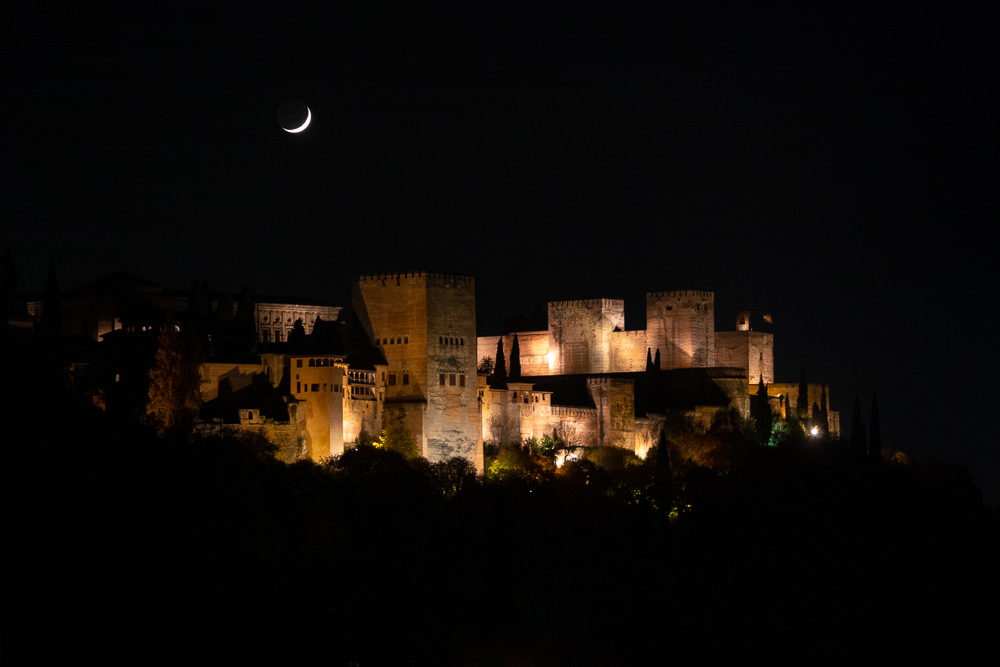
The Alhambra is a must-see, and you should count on needing a full day to do so. Walking the outer walls is free, though to explore the impressive inner palace, you need an advance ticket. These tickets are strictly limited to a predetermined timeslot. I witnessed two other tourists arriving just 20 minutes late and being denied entry, so be sure to get your tickets in advance and be there on time!
A unique area to stay in Granada is Sacromonte, traditionally the neighbourhood of the Granadian Romani, who first settled there during the Middle Ages. This barrio is typified by its many white-washed cave houses built into the hillside, some of which have been renovated and turned into tourist accommodation.
I loved staying in one of these cave-houses, which was far more comfortable than you might expect from a cave (in fact, the sound insulation and acoustics made me sleep like a bear). The views, which directly faced the Alhambra on the opposite hill, backed by the snowy mountains of the Sierra Nevada, are spectacular.
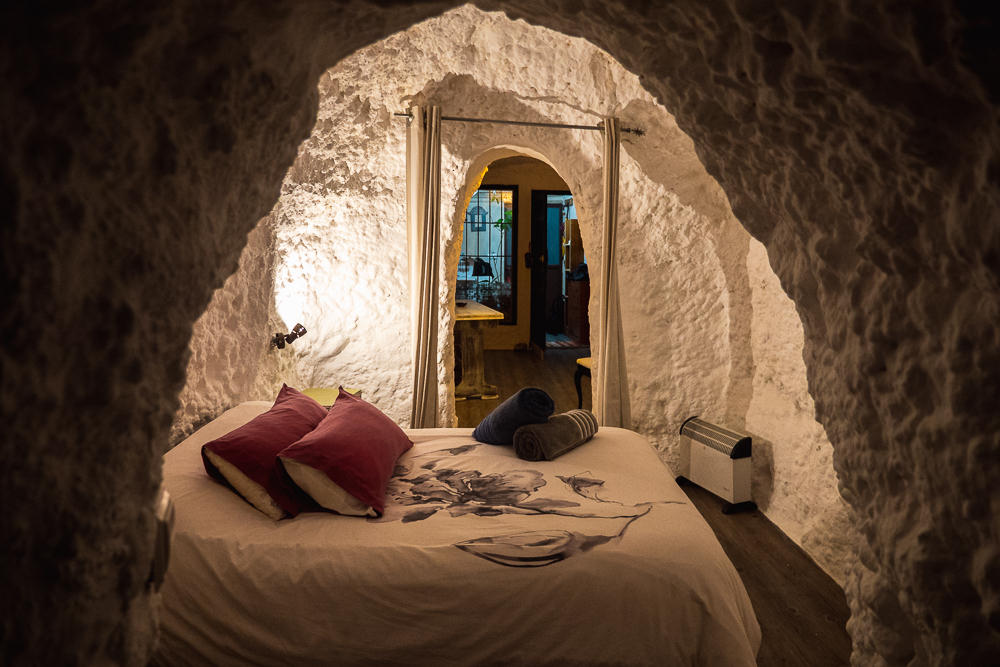
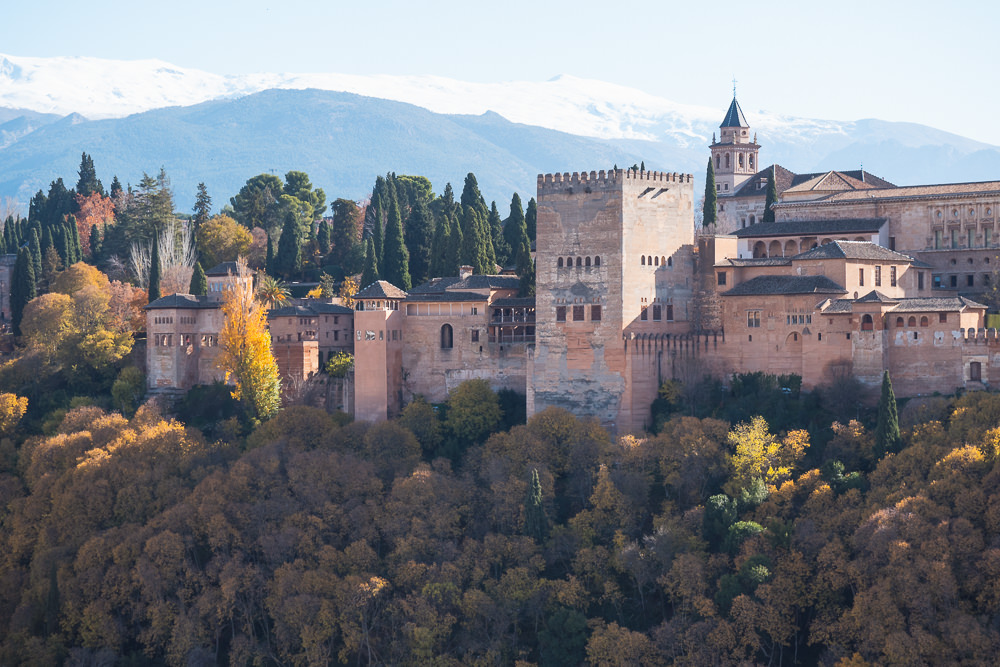
Although the Alhambra is the star attraction, don’t make the mistake of skipping the city itself. Granada is a gentle city whose winding streets and marvellous views invite you to explore at random — and if you ask me, it’s one of the nicest cities in Spain.
Ideally, dedicate at least two full days to Granada, or if pressed for time, one day for Granada and one day for the Alhambra.
Granada is one of the few Spanish cities maintaining the tradition of free tapas (small savoury dishes) with your drinks. Find a recommendation for a good tapas bar and then commit to it, as each round of drinks your order will level up your accompanying tapas, with the best stuff reserved only for those who keep ordering. You can maximise your tapa-to-drink ratio by ordering cañas (small beers) instead of larger tubos.
Resist the temptation of ordering any food a la carte. Trust me, you won’t get hungry!
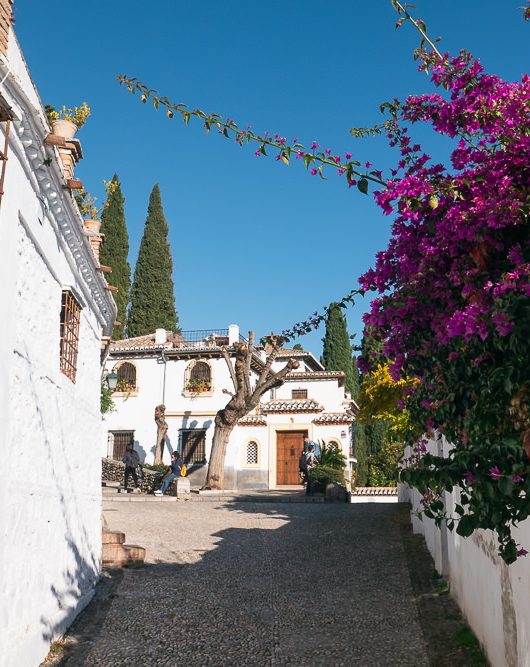
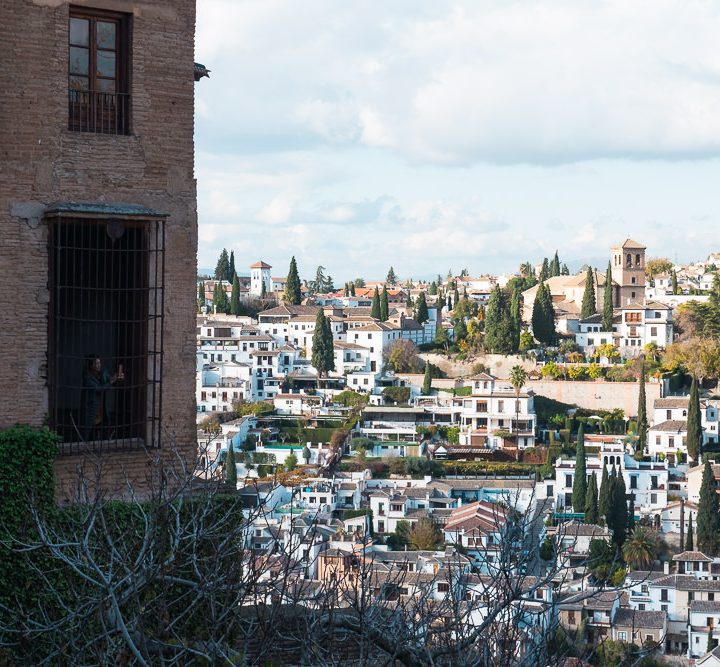
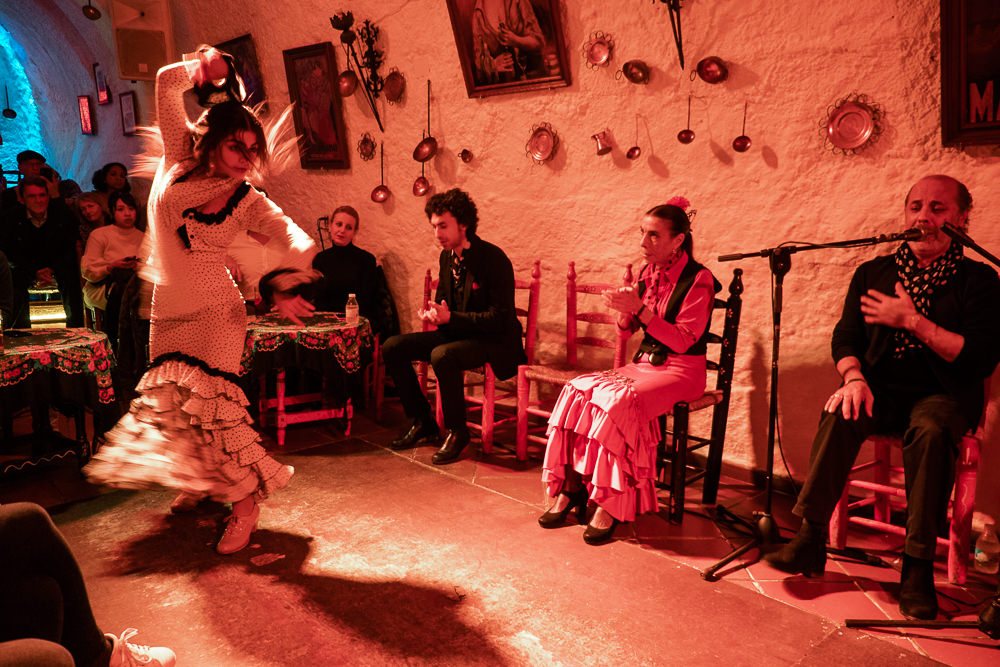
Cap off your trip with the most Andalusian experience of all: witnessing the traditional Flamenco dance. In Granada, this dance is called the Zambra Gitana, and this version is even more intense. Rooted in Arabic ritual and evolving underground (quite literally, in the case of Sacromonte’s caves) during the inquisition in the 16th century, the Zambra is still performed nightly and with sensational passion in several cave bars in Sacromonte.
Need more Spain travel inspiration?
This article is an amalgamation of my several trips through southern Spain. With so much to see and experience in Andalusia, you can spend weeks there and barely scratch the surface.
To expand your Andalusia itinerary, consider a day trip to Córdoba, home to the Mezquita, an astonishing architectural mix of a cathedral and a grand mosque.
Stay in some of the many white villages in Andalusia and go hiking in the Grazalema National Park — I highly recommend the beautiful trail into the epic Garganta Verde (Green Throat), an amazing gorge home to condors and eagles.
For something a little off the beaten track, consider mountain biking along the Via Verde de la Sierra, an abandoned mountain railway with 30 tunnels and 4 bridges, now converted into a cycle trail.
The Spanish coastline tends to be highly commercial, especially around Malaga, but there are some exceptions. Nerja is often tipped as a gentler resort on the Costa del Sol, and a stop at the ancient peninsular port city of Cádiz is also well worth it — many Sevillanos escape to Cadiz themselves during the summer.
Some links may be affiliate links, meaning I may earn commission from products or services I recommend. For more, see site policies.

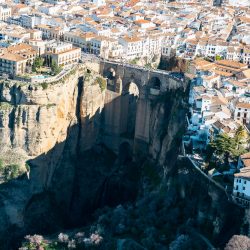
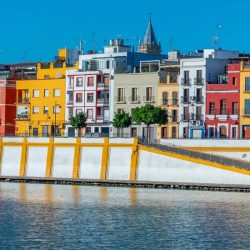




amazing blog mate ! love your blogs keep uploading more cheers